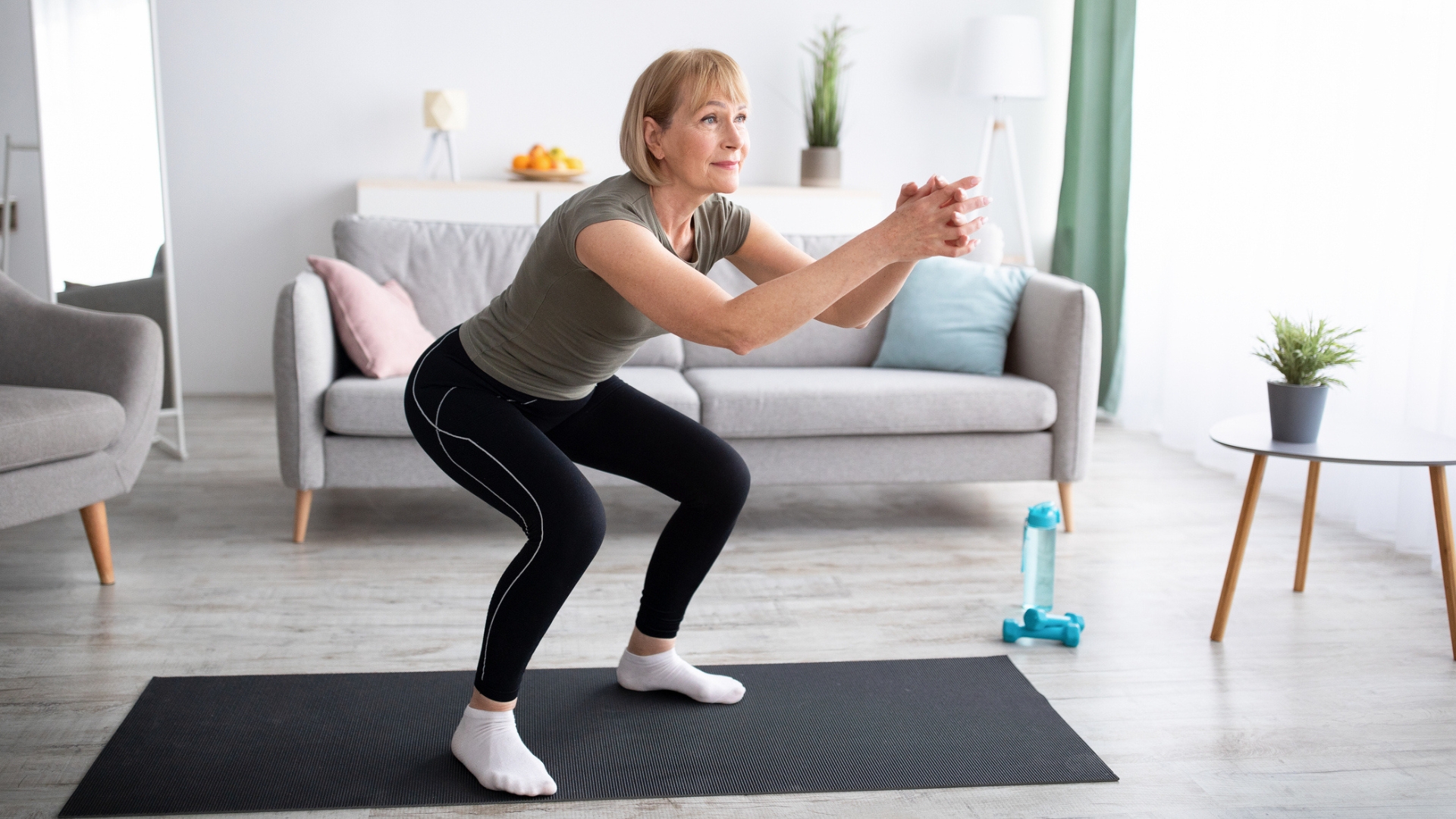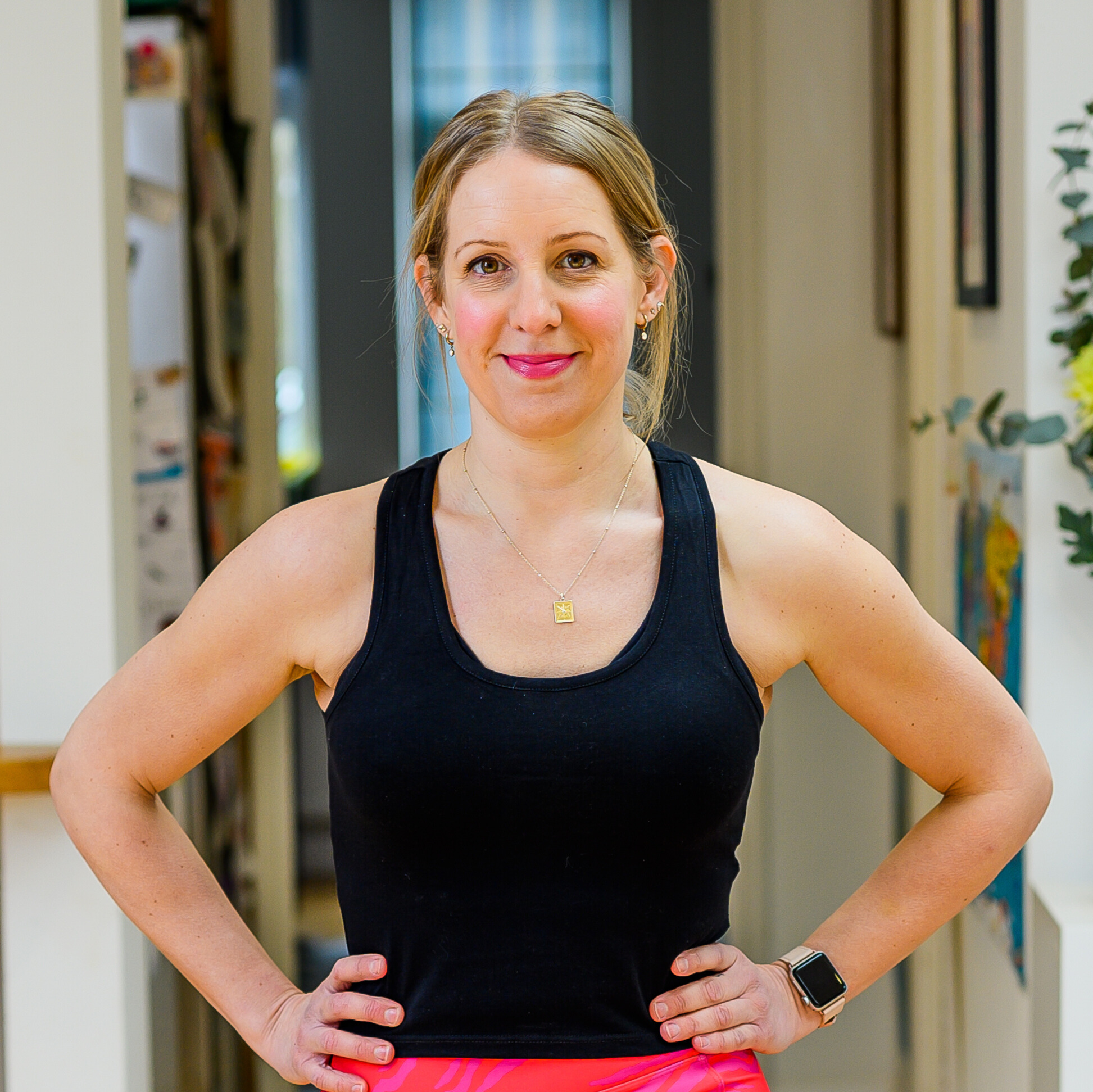Do your knees cave in when you squat? Try these three exercise physiologist-approved moves
Better squats here we come


If your knees tend to cave in during squats or split squats, there could be an often-overlooked culprit: a weak gluteus medius.
The gluteus medius is one of three big muscles in your buttocks, sitting at the side of your hip. It helps to stabilize your pelvis, hips and legs, especially during weight-bearing movements like squats, lunges and even walking.
When it’s weak, your body compensates and may result in poor movement patterns that can cause your knees to cave in. Physical therapist and Squat University founder Dr. Aaron Horschig highlighted this in a recent post on Instagram.
A post shared by Squat University (@squat_university)
A photo posted by on
“On the side of your hip lies a small muscle called your glute medius that helps stabilize your pelvis and leg. If it’s not working well your knees can cave, your pelvis can drop and the rest of your body can feel the effects,” he says.
Horschig recommends doing a clamshell in a side plank position to both strengthen and activate this muscle. This variation, he explains, helps the gluteus medius stay contracted throughout the move, improving pelvic and hip stability.
It got me thinking about other ways to build strength in this area so I spoke to clinical exercise physiologist and orthopedic surgeon Jerome Enad. He explained more about the importance of the gluteus medius and recommended three exercises to help.
How does a strong gluteus medius improve squat technique?
“The gluteus medius helps maintain proper alignment of the pelvis, but weak or injured hips can cause issues with balance and coordination,” says Enad.
Start your week with achievable workout ideas, health tips and wellbeing advice in your inbox.
“A condition known as the Trendlenburg gait can develop. This is when the weak gluteus medius can’t hold the pelvis level when standing on the weaker side, so it drops on the opposite side during walking.
“It’s like when you carry a heavy backpack on just one shoulder, causing you to be lopsided. Similarly, if a person with a weak gluteus medius is doing squats, the compensation that occurs while standing on both feet is a type of lean that may look like your knee is caving in.”
He recommends trying these three moves to strengthen the gluteus medius.
1. Single-leg deadlift
Sets: 3 Reps: 10 each side
- From standing, shift your weight onto your right foot, bending your right knee slightly.
- Lean forward, hinging at your hips while lifting your left leg behind you.
- Push your hips forward to slowly return to the starting position.
- Do all your reps on one side, then switch sides.
Make it harder: hold a dumbbell or kettlebell in one hand.
2. Clamshell
Sets: 3 Reps: 10
- Lie on your side with your knees bent at 90° and one knee on top of the other.
- Raise the top knee while keeping your feet together. Avoid moving your pelvis or tilting backward.
- Lower the knee back down with control.
Make it harder: Place a short-loop resistance band around the knees.
3. Banded lateral walk
Sets: 3 Reps: 10 each direction
- Stand and wrap a resistance band around your thighs, just above your knees, or your ankles as in the video above.
- Stand with your feet hip-width apart to create tension in the band and bend your knees slightly.
- Take one step sideways, then follow with a sidestep in the same direction with the other foot, keeping tension in the band throughout.
- Take 10 steps in one direction then 10 steps back to the start. If you’re working in a small space, move back and forth in space available.
Make it harder: Choose a band which offers more resistance.
Maddy Biddulph is a journalist specializing in fitness, health and wellbeing content, with 26 years in consumer media working as a writer and editor for some of the bestselling newspapers, magazines and websites in the US and UK, including Marie Claire, The Sunday Times and Women’s Health UK.
She is a CIMPSA-certified PT and works one-on-one with clients, as well as running Circuits Club classes which mixes cardio and strength training and chair-based exercise classes for seniors.
You must confirm your public display name before commenting
Please logout and then login again, you will then be prompted to enter your display name.

